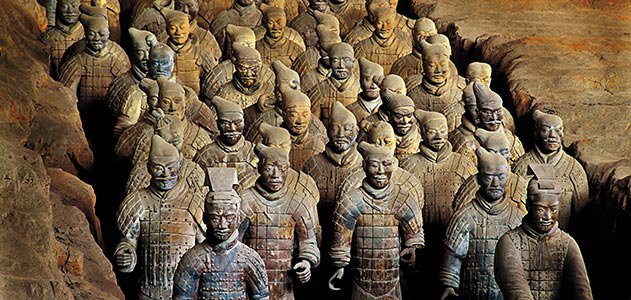
2,200 years ago, Shaanxi Province, China
Now: Museum erected at the site, Emperor Qinshihuang’s Mausoleum Site Museum
Imagine building your tomb for more than 30 years — fueled by limitless power, resources and yearning for immorality. Even then your mausoleum might not compare to the complex commissioned by Qin Shihuang, the first emperor to rule a unified China from 210 to 221 B.C. According to ancient Chinese texts, more than 700,000 laborers worked for the site, which sprawls 22 square miles, far more land than most college campuses (all but three in the U.S., in fact).
The site features statues of dancers and acrobats, gold-embellished carriages and bronze waterfowl in diorama-like canals. But it’s perhaps best known for the Terracotta Army, thousands of life-sized clay warriors, lining trenches in military formation. In 1974, farmers digging a well discovered the first statue. Since, three major excavations have uncovered 2,000 additional soldiers, although another 6,000 likely remain buried. Each statue seems to portray a real soldier in Qin Shihuang’s force, based on their individual hairdos, caps, tunics, facial hair and functioning bronze weapons, which remain remarkably sharp to this day. Even their ears are unique, according to a 2014 study in the Journal of Archaeological Science.

Leave a Reply